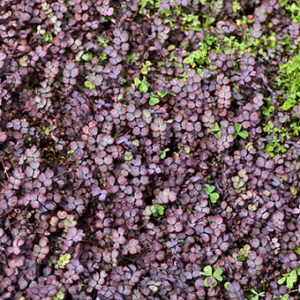Rhodohypoxis milloides ‘Claudia’
£12.50
Frequently Bought Together



Description
Rhodohypoxis milloides ‘Claudia’ (Rose Grass)
Quick Facts
- Common Name: Rose Grass, Claudia Rose Grass
- Botanical Name: Rhodohypoxis milloides ‘Claudia’
- Plant Type: Bulbous perennial
- Mature Height: 8-12cm
- Mature Spread: 10-15cm
- Flowering Period: May to September
- Flower Colour: Pure white with yellow centres
- Foliage: Narrow, grass-like, hairy leaves
- Hardiness: Hardy with protection (RHS H4)
- Soil Requirements: Well-drained, acidic to neutral soil
- Aspect: Full sun to partial shade
- Maintenance: Low maintenance
Description
The Rhodohypoxis milloides ‘Claudia’ is a stunning white-flowered alpine perennial that brings luminous beauty to UK rock gardens, container displays, and specialist plant collections. This enchanting drought-tolerant plant showcases masses of pristine white blooms with golden-yellow centres, perfect for gardeners seeking easy-care, continuously flowering alpine plants.
This delightful miniature treasure may be compact, but it creates magnificent displays throughout the entire growing season. Countless star-shaped white flowers dance above dense cushions of fine, grass-like foliage, forming charming low mounds that illuminate garden spaces with their pure colour. When planted en masse, these tiny 2cm blooms unite to form breathtaking sheets of white that catch and reflect light beautifully.
As one of our most reliable winter hardy alpine plants, ‘Claudia’ adapts wonderfully to well-drained garden conditions and flourishes in the Irish climate with minimal fuss. Its naturally compact growth makes it a treasure for rockeries, alpine collections, raised planters, or as luminous border edging. The plant’s ability to slowly spread creates expanding pools of white that enhance garden schemes year after year.
The Rhodohypoxis milloides ‘Claudia’ creates magical partnerships with colourful alpine companions, early bulbs, and textural grasses, offering endless possibilities for creative garden compositions suitable for Irish gardens. Its pure white blooms provide the perfect backdrop to showcase neighbouring plants while adding elegance to moon garden schemes.
Caragh Garden Notebook
Plant, spacing them 5-8cm apart and 3-4cm deep in well-prepared, gritty soil. Excellent drainage is absolutely essential – we recommend adding plenty of sharp sand or fine gravel to heavy soils. For container growing, use a 50:50 mix of quality compost and horticultural grit. These plants cannot tolerate waterlogged conditions, especially during winter months. Create raised planting areas or mounded beds if your soil retains moisture. A neutral to slightly acidic pH (6.0-7.0) works best, so avoid chalky soils or incorporate ericaceous compost if necessary. Allow the foliage to die back naturally in autumn – this process feeds the underground rhizomes for the following year’s flowering display. Apply a light grit mulch around plants to protect from winter wet. Clear away dead foliage in early spring before new growth emerges.
Divide established clumps every 3-4 years in early spring, carefully separating the small rhizomes. Ensure each division has viable growing points attached. This is also the perfect time to refresh the growing medium with fresh gritty compost.





